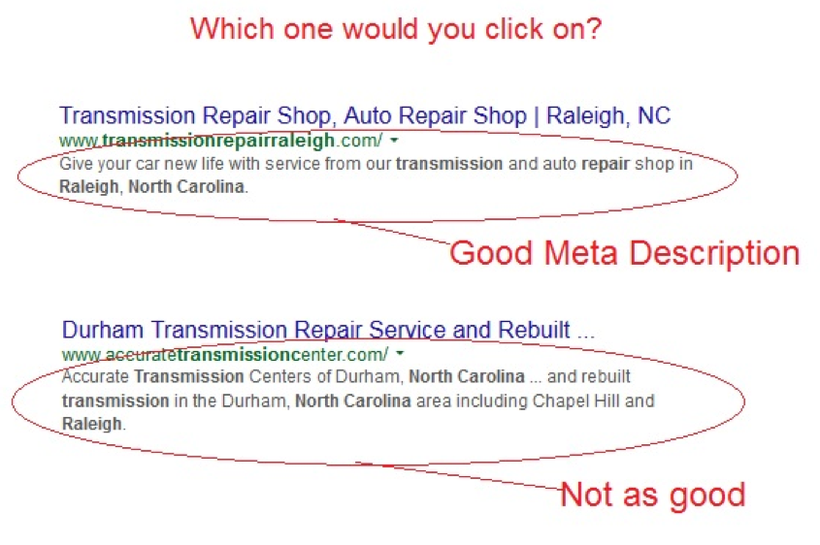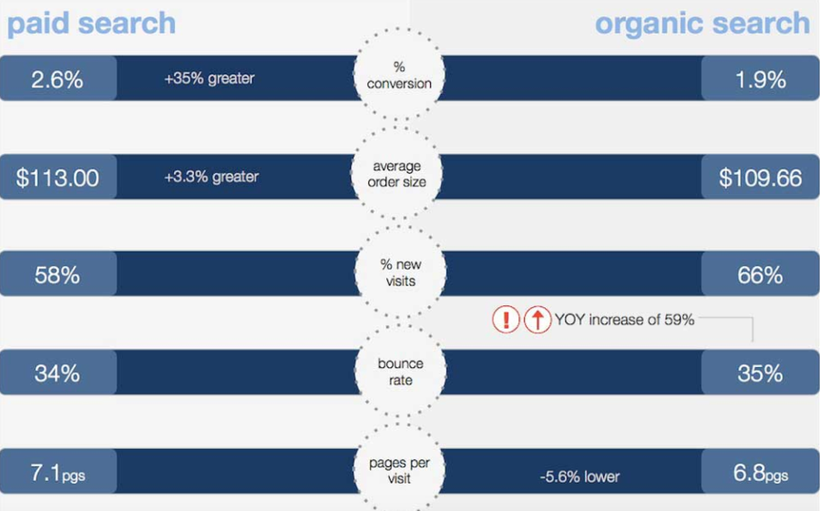By Karina Welch, Corporate Marketing Manager, Blue Fountain Media
SEO has become one of the most widely talked about and highly sought after skillsets in the digital sphere. But with all the chatter, comes a lot of information—sometimes right, sometimes wrong—that inevitably gets passed around.
Creating a successful digital marketing strategy now depends on making sense of SEO—a task that can prove daunting in the midst of all this idle chatter. So in order to help clear the waters, we’re here to debunk five of the most common myths in the industry today.
1. It’s all about the ranking.
Put simply, SEO is the act of maximizing your website’s potential to rank at the top search engine listings, such as Google, Bing, and Yahoo. So yes, ranking does matter. But it’s not the end-all, be-all of a strong SEO strategy. If your content doesn’t speak to your consumers, if it doesn’t deliver once it draws them in, then what’s the point? Sure, gaining traffic is great. But if you can’t convert users into loyalists, then isn’t it all sort of for nothing?
In order to survive in today’s marketplace, you need to have smart target keywords and links that appeal to users and are relative to your brand. In the long run, using high-ranking keywords and producing dead-end content isn’t going to get you or your users very far.
Creating a strong target keyword list for your site is one of the first and most crucial steps in crafting a strong digital marketing strategy. However, often times brands will make the mistake of including these keywords throughout their copy too frequently, and where it doesn’t actually make sense to.
This practice is called keyword stuffing—repeatedly using keywords to drive traffic to your site. And it’s something that’s going to cost you major points with search engines like Google.
In fact, keyword stuffing was one of the prime targets for the release of the Google Panda algorithm in 2012. Since then, Google has been docking major points for sites that use this technique, smearing them with the “black hat” label along the way.

A classic (bad) example of stuffing, courtesy of Word Stream.
3. Meta tags don’t matter.
Meta tags are the HTML tags, which appear between the opening and closing tags of a website. Three elements compose the meta tag: the title tag, the meta description, and meta keywords. There’s been a lot of debate in the SEO game about the importance of meta tags, because most major search engines no longer use them to determine rankings.
But meta tags are still valuable. Here’s why: meta descriptions are the text snippets that appear just under your website title in the search engine results. They are the hook for your site and tell users what your site is all about. Hence, well-thought-out meta tags could have huge click potential for your site. They can deliver the traffic, and if you can deliver the content, meta tags could be the fruits of a massive user following.

Strong versus weak meta tags, as shown by Telapost.
4. Linking out sends users away.
In the short term, yes, this is true. Including links to other websites and resources is going to direct your users away from your site—momentarily. But if the links you are providing are going to benefit your users, and if they really enhance the overall experience, then aren’t your users going to be appreciative? Moreover, aren’t they going to want to come back to your site for more? What matters here isn’t the number of outsourcing that you do. Rather, it’s about the target keywords you’re using and the content that you’re delivering, even if it isn’t on your own site. Know that useful, search related, persuasive content is always going to trump in the realm of SEO.
5. Organic media is always better because it’s authentic.
There is no data to back up this claim. In fact, research suggests the opposite. Nearly 60% of marketers believe that paid social media is more effective than organic, according to Clutch. 86% of B2B and B2C marketers use both paid mediaand organic media. Not to mention, paid search visits drive 35% more conversion traffic than organic searches.
Paid ads can actually help to improve the organic aspects of your digital marketing strategy. This is because return on investment (ROI) is far easier to track on paid ads than on free listings. By tracking click through rates for paid media, marketers can discover which keywords are driving the highest conversion rates for their sites. This is paramount to building your brand base online and improving your overall digital marketing strategy.

Paid searches yield 35% greater conversion rates, as shown on MarketingProfs.
Busting through these five myths leads us to one critical conclusion. Trying to separate fact from fiction in the realm of SEO doesn’t have to be so daunting. You see, at the core of every search engine algorithm is one goal: to deliver the right sites and the right information to searchers. And so long as your team takes this user-first approach to heart, there’s no denying that your brand will be playing for keeps.
Karina Welch is a Corporate Marketing Manager at Blue Fountain Media, a top digital agency in NYC specializing in website design and digital marketing. Karina is passionate about all things digital and is always on the search for the next marketing and technology trend.
The Morning Email
Wake up to the day’s most important news.
